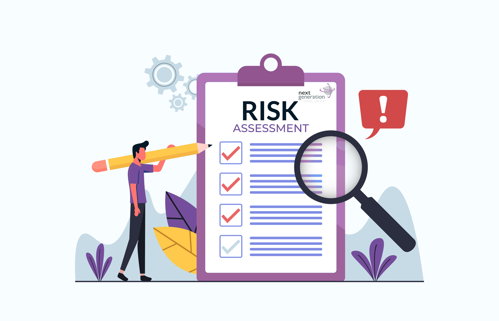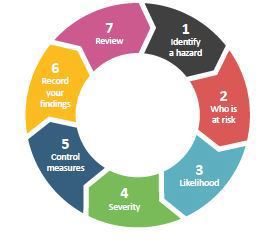-
Next Generation Travel Group
-
Our Brands
-
Resources
-
Blogs
- Contact Us
- Search
A risk assessment is a careful examination of what could cause
harm to members of the group, so that you can consider whether sufficient measures have been taken to ensure the safe return home of everyone involved.
Are you preparing for an upcoming school trip? If so, you’d be forgiven for putting off the task of conducting the risk assessment.
While it may not be the most exciting exercise, it’s a crucial step in planning a school trip. After all, as a teacher, the safety of your students during a school trip is your top priority.
So, how can do you make life easier for yourself when conducting a risk assessment?
In this guide, we'll break down the key components of a risk assessment and provide you with an easy-to-follow template to simplify the process of creating one for your trip.
A school trip risk assessment is essentially the process of creating a complete list of potential hazards associated with the planned activity. For each of those hazards, you evaluate the risks associated and outline the control measures to minimise or eliminate the risks.
Why is it necessary? First and foremost, it’s the law. Guidelines from the UK government state that health and safety law requires schools to assess risks and establish appropriate control measures.
Beyond this, students are young and particularly vulnerable to hazards. Carrying out a risk assessment will help you to ensure the safety and well-being of students, as well as staff and any volunteers during school trips. By conducting a thorough risk assessment, you can demonstrate your school’s commitment to student safety and be better prepared to handle any emergencies that may arise.

Whether you need to conduct a full risk assessment will depend on the type of trip you are planning:
These might include recurring visits to a local sports centre, or place of worship, for example.
In these cases, the visits are generally covered by the school’s existing policies and procedures for everyday risks, such as slips and trips.
Government guidelines state that these trips can be considered lessons in a different classroom and only require minor planning beyond the educational aspect of the trip.
When a trip isn’t covered by a school’s existing policy, it will require a risk assessment. This might include scenarios where:
With this in mind, the vast majority of school trips, including those offered by Next Generation Travel, will require a risk assessment to be completed.
Your risk assessment should include a summary of all the potential hazards associated with your planned trip. For each of these, you should then evaluate the associated risk and establish your strategies to minimise or eliminate the risk. It can also help to acknowledge the remaining risk with your proposed strategies.
Here’s a short summary of the key criteria your risk assessment should cover:

The table below provides an example of a typical risk assessment. Feel free to use this as a starting point, which you can adapt to suit your needs. Click to download.
We’ve already covered what your risk assessment should include, but it can still feel like a big job to complete one from scratch.
So, let’s break it down into a few key steps:
Brainstorm all possible hazards associated with the trip, considering factors like the location, the planned activities, your mode of transportation, and the people attending the trip.
Develop a standardised method for evaluating the likelihood and severity of each identified risk. This could be something as simple as “low”, “moderate”, and “high” — or a graded system from 1 to 5. With this system in mind, give each hazard a rating.
Consider all individuals who may be impacted by the identified hazards, including students, staff, volunteers, and members of the public. Do the hazards pose different risks for different individuals? Will each group require different strategies to mitigate the risk?
For each identified hazard, plan out strategies to minimise or eliminate the identified risks. This could be something as simple as ensuring appropriate clothing is worn, through to bringing in qualified instructors or first-aiders.
Anticipate potential emergency situations and create contingency plans to address them effectively, such as designating emergency meeting points or establishing communication protocols. Running through these scenarios will help you to spot holes in your own plan and adjust for them accordingly.

In addition to the standard risk assessment process outlined above, there are several other approaches you can consider when planning a school trip. You can use these in combination with a generic risk assessment, as a way to assess potential risks in more detail.
The STAGED approach is a framework for assessing risks associated with specific events or activities during a school trip. In this approach, you consider the following criteria associated with your planned activity:
The aim here is to think in more detail about the typical things that are involved in trips centring around a specific activity or event. You can carry this exercise out ahead of your typical risk assessment, to help identify hazards.
Developing a Plan B risk assessment is all about anticipating potential disruptions, or unexpected changes to the original trip plan and planning your backup solution to ensure your pupils are safe and the trip can continue uninterrupted. For example, what will you do if your coach breaks down, or storms mean your planned ferry route isn’t running?
By expecting the unexpected, you’re able to plan in advance and avoid being caught off-guard.
In the event of an emergency, the last thing you want is to feel unprepared.
Establishing clear emergency procedures can go a long way in helping you to keep a clear head and manage any unexpected, potentially stressful situations during a trip. When planning emergency procedures, you might want to consider:
Providing suitable insurance coverage is an important part of risk management planning for school trips. The type of insurance you need, such as travel insurance or medical insurance, will depend on the nature of your trip.
When you book a trip with Next Generation Travel, you will be automatically covered by our group travel insurance with Endsleigh Insurance.
When conducting a risk assessment for school trips, it's might also help to consider the different stages of the trip and the specific risks associated with each of those stages.

To provide some inspiration, here's a breakdown of some key things to think about in relation to each stage of your trip:
During the pre-tour planning stage, the biggest focus will be that you have all the paperwork and information you need, including:
When assessing risks related to transportation, you need to be sure that your group will be able to get to and from all intended activities without risks to safety or disruption of the trip.
Things to consider might include:
Develop contingency plans for any potential transportation disruptions and ensure that you are clear on safety procedures.
It’s important to evaluate the safety and suitability of your chosen accommodation.
This might include looking into:
Assess the risks associated with planned activities, taking into account factors such as:
Specific activities will often come with unique risks, so this can be particularly helpful to dig into and ensure nothing is overlooked.
You don’t have to do everything alone, there are a number of organisations offering guidance and support for risk assessment and related safety topics:
For more information about external support when planning your next school trip, head to our external safety support resources page.
When you book a school trip with NGT, our team of specialists don’t just help you to plan the perfect bespoke trip for your learning goals, we also help with the planning and can provide guidance around risk assessment.
Simply find a school trip and enquire with our team to get started.
This document has been created to assist you with the completion of your own risk assessments for your trip so that you can manage the safety and wellbeing of your group throughout the visit

We answer all the common FAQs

We have all the required industry accreditations & more!

Travel insurance is included as standard